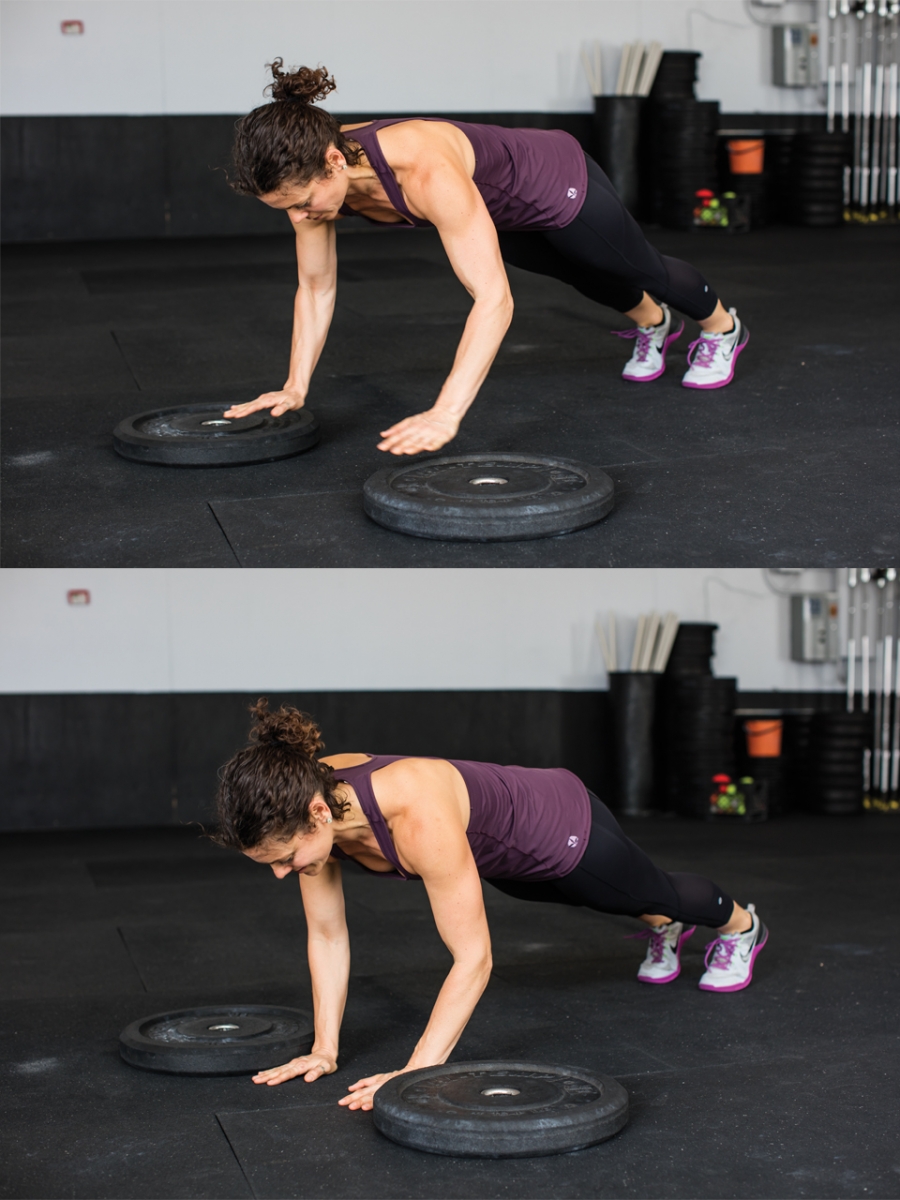CLOSING THE GAP
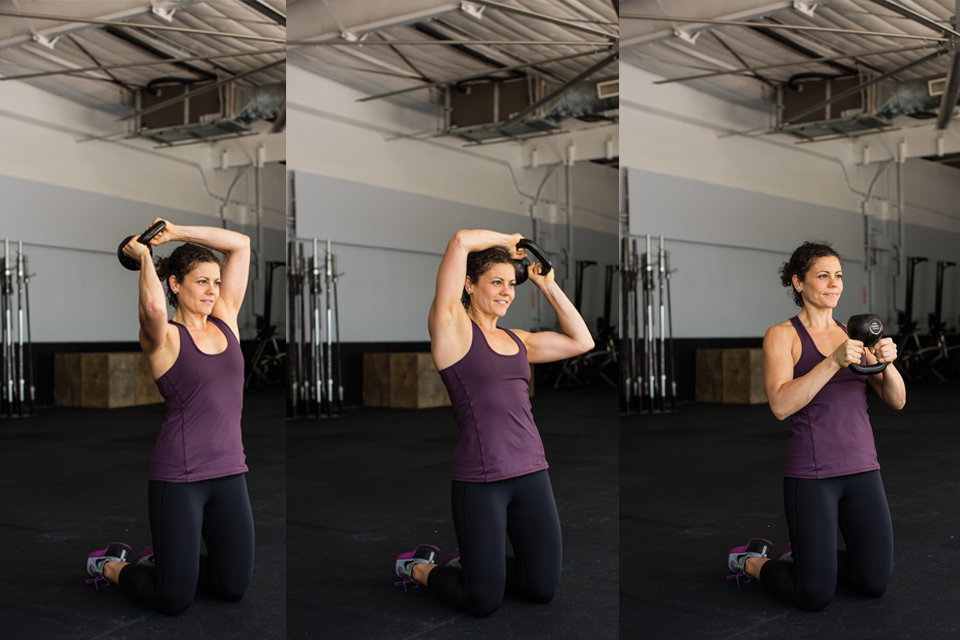
Although female athletes typically have sufficient mobility in the upper and lower body movements, many need to seek improvement in trunk stability to be more powerful and less injury prone.
If we want to perform at our highest potential, we need to have a strong foundation of movement quality. Just as getting the proper nutrition and recovery are vital to us reaching our personal best, we also must keep a mind’s eye on this movement baseline. Research tells us that female athletes (and I consider everyone an athlete at some level) have trends in movement that we see more often in females than in males. The best and sure way to know is to use the Functional Movement Screen (find professionals that can screen you at functionalmovement.com) to individually determine what a female athlete’s movement baseline is and whether they truly fall in this category and need specific exercises for trunk stability.
If we are simply judging off the trends and evidence provided by the research, typically, a female athlete has sufficient mobility in the upper (shoulder complex) and lower (hip complex) body movements, yet lack the appropriate trunk stability. Trunk stability acts in creating a more solid connection, resists extension forces, and is a conduit for the energy and force transfer. This is key to connecting the upper and lower body movements and also plays an important role in position and posture when performing larger multi-joint movements, which are often used in training such as squats, cleans, snatches, sprinting and kettlebell swings—to give you just a few examples.
So if you fall into the category of trunk stability being your “weak link” like the majority of female athletes, supplementing your training program with movements that will improve trunk stability could be key to getting your training to the next level. Additionally, if this is your “weak link”, it makes sense to be cautious and reduce or back off the heavy loads during these bigger movements that require good trunk stability. (At least for now.) It’s the idea of taking one step back in order to take three big steps forward. This concept is sometimes not popular at first. But over my 15 years of experience, the athletes willing to take the path of investing in this movement quality get to reap the benefits of reaching their goals more quickly. And you will possibly lower your risk of injury when you are ready to make that push for conditioning, strength, or power again.
PERFORMED BY BROOKE EHLINGER,CROSSFIT SOUTH LAMAR
1/ Tall Kneeling Halo
Purpose: Use a symmetrical kneeling stance in order to place the emphasis stabilizing the hips and torso while challenging it with an upper body movement.
• Start by setting a kneeling stance with knees hip-width apart, hips fully extended, and stacking the shoulders directly over the hips. There should be a straight line from knees, to hips, to the shoulders.
• Hold the kettlebell by the horns with bottom up and just in front of the chest.
• Create a circular halo by reaching with the bottom of the kettle bell over one of the shoulders, continuing behind and across the back of the shoulders, and then over the opposite shoulder to return to start position.
• During the halo movement you may shorten the circle to around the head, or challenge yourself to a lower and larger halo around the shoulders if you have the shoulder mobility to do so.
• Key here is to make sure that nothing below the belly button moves or changes. Stay as tall as possible and don’t lose height during the movement.
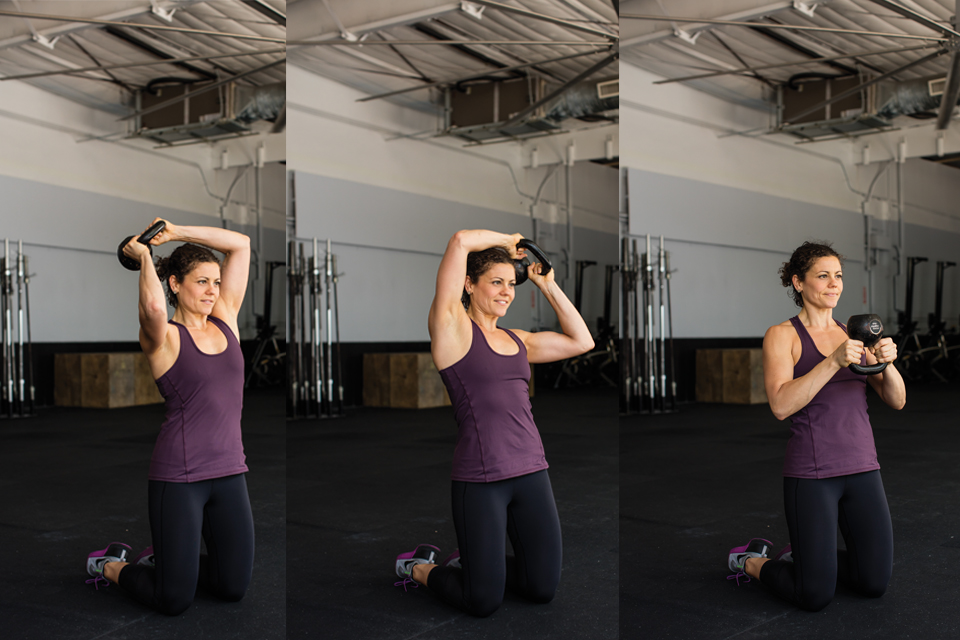
2/ Plank Diagonals
Purpose: Focus on static motor control and maintaining torso and pelvic position during the opposing limb movement.
• Start in a plank position on your elbows with feet at hip-width apart with toes pulled toward shins.
• Using slow controlled movement, lift the opposing arm and leg just off the ground. Make sure not to lift higher than shoulders and hips so that you do not collapse your torso or hip position.
• Also be conscious of maintaining head and neck in line with torso.
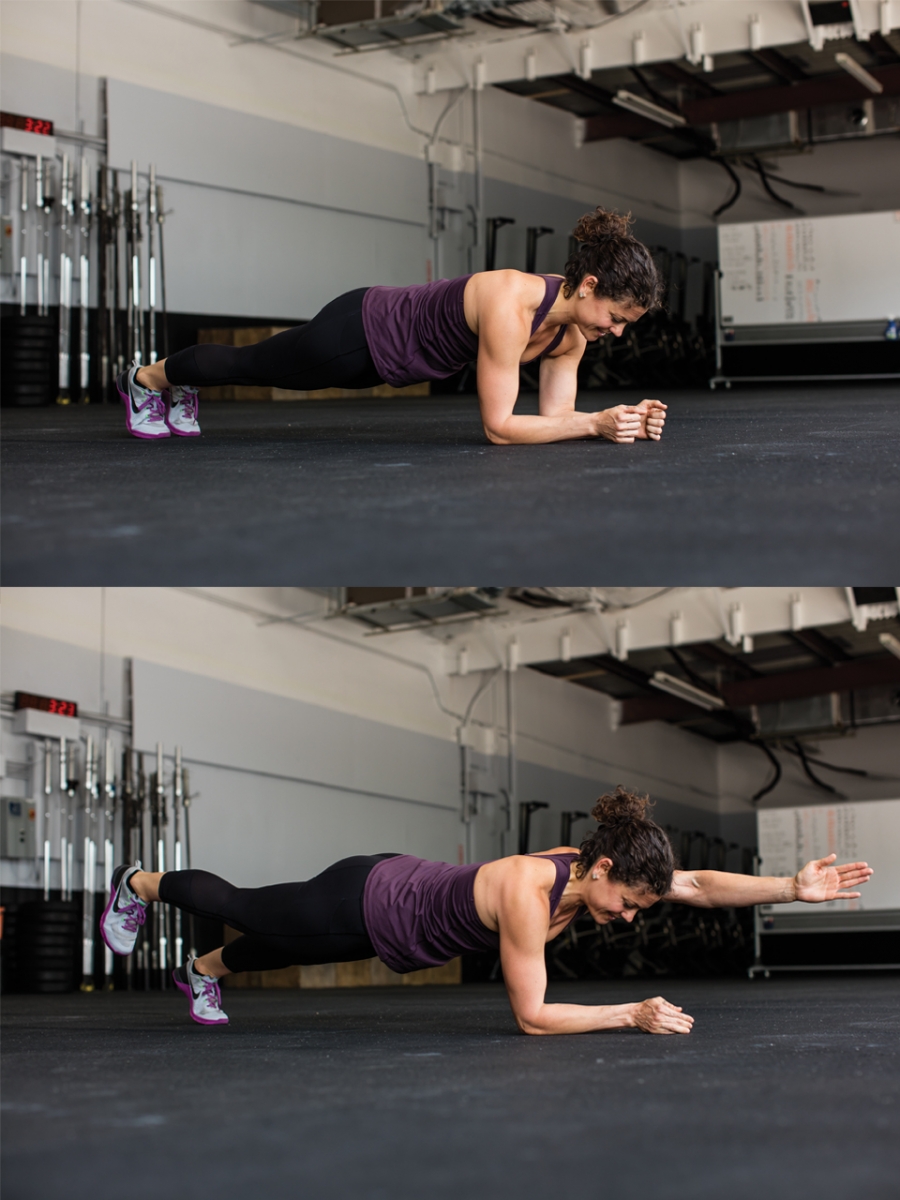
Keep reading for more moves!
3/ Clock Walk
Purpose: Focus on static motor control with a 3-point base of support to challenge stabilizing the transverse plane and upper body dynamic stability.
• Get into a push-up position and then stack the feet allowing one foot to create a pivot point.
• Start the movement by taking small steps with the hands side-ways moving in a circular pattern.
• Make sure that you maintain your torso position with hips and shoulders staying parallel with the ground.
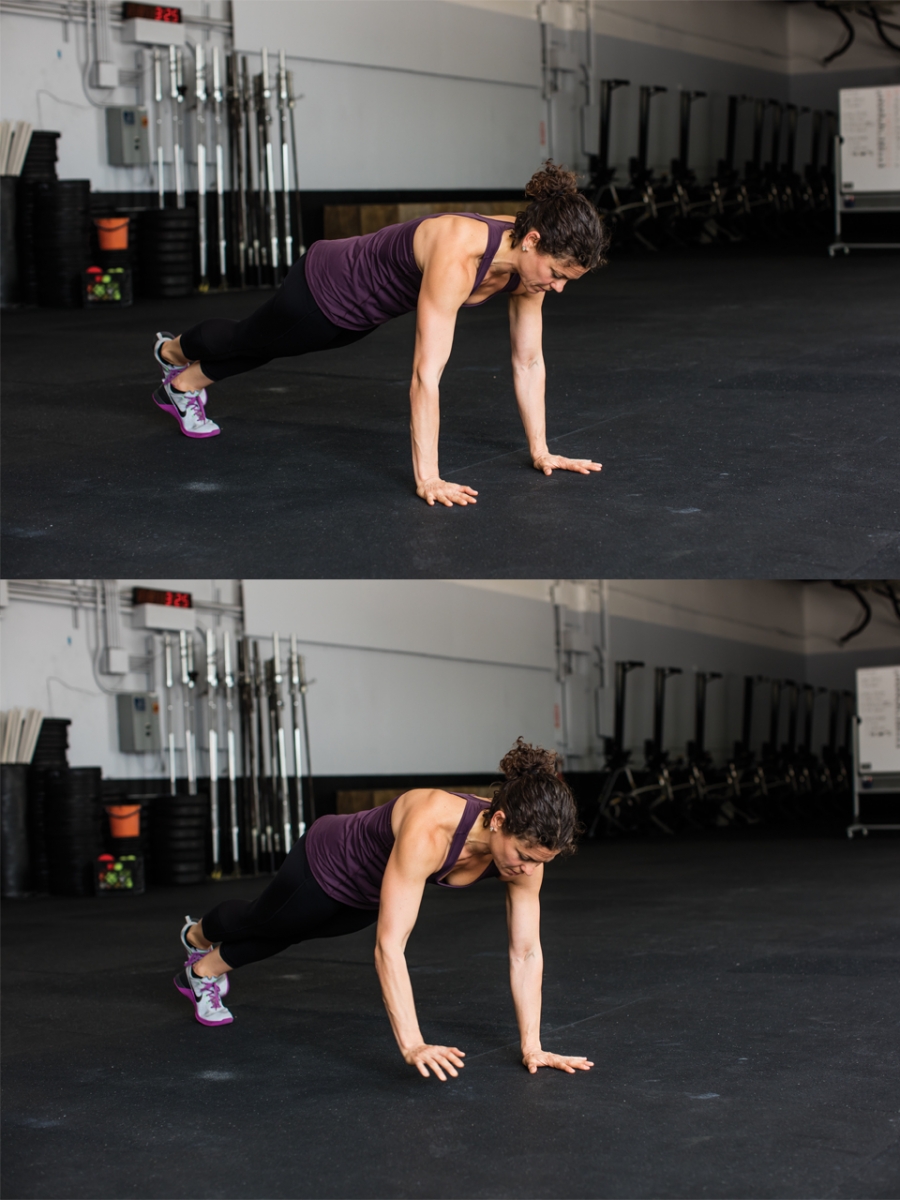
4/ Upper Body Box Jump
Purpose: Add an upper body power movement while maintaining the plank position. This also allows the impact to be reduced by landing on the box with a controlled step-down.
• Get into a push-up position between two steps or boxes that are 4”-8” in height. Start low and master form.
• Quickly perform a dip and drive by flexing and extending the elbows and shoulders to perform the upper body jump.
• Land on the step with a controlled landing with a focus on reducing the impact as much as possible.
